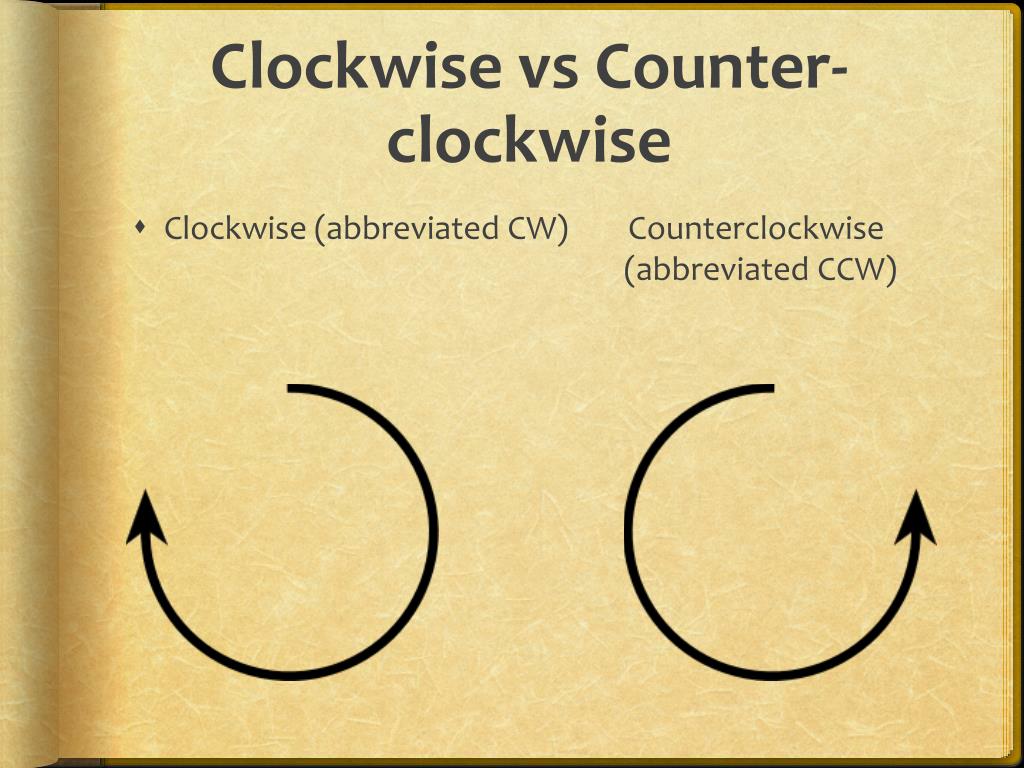

Gauss), which says that any polynomial P ( z ) = ∑ ν = 0 n a ν z ν with n > 0 and a n ≠ 0 has n roots.
#Counterclockwise and clockwise how to#
In the next section, we show how to expand a function in a Laurent series at a singularity, and we go on to use singularities to develop the powerful and useful calculus of residues in a later section of this chapter.Ī famous application of Liouville's theorem yields the fundamental theorem of algebra (due to C. But we shall do more than just tolerate the existence of singularities. As pointed out when introducing the concept of the point at infinity, even innocuous functions such as f ( z) = z have singularities at infinity we now know that this is a property of every entire function that is not simply a constant. Apart from the trivial constant functions then, singularities are a fact of life, and we must learn to live with them. Hence f ( z) = a 0.Ĭonversely, the slightest deviation of an analytic function from a constant value implies that there must be at least one singularity somewhere in the infinite complex plane. If now we choose to let r approach ∞, we may conclude that for all n > 0, | a n| = 0. In fact, if | f ( z)| ≤ M for all z, then Cauchy's inequality Eq. (11.37), is Liouville's theorem: If f ( z) is analytic and bounded in the entire complex plane it is a constant. Īn immediate consequence of the inequality, Eq. This is an instance of the following fairly obvious theorem, whose proof we skip.

Glide reflection, since it is the composition of a reflection that switches sense and a translation that does not, must also switch sense. (Draw a picture to illustrate this.)īy contrast, translation and rotation clearly preserve the sense of any sequence of three points. Reflection switches the sense of any sequence of three points. Imagine that we apply a reflection to ABC in order to get A′ B′ C′. Will the two ordered triangles and have the same sense? Not necessarily. Suppose A′ B′ C′ is a triangle that is congruent to ABC, with the correspondence A→ A′, B→ B′, C→ C′. If we take the same set of points but put them into a sequence in another way, say,, then we may get a sequence with the opposite sense to the sense of. Notice that the idea of sense depends on the order in which we list the points, not just on the points themselves. If we travel clockwise, then we say the sequence has clockwise sense.įor example, in Figure 4.23, has clockwise sense while has counterclockwise sense. Given three points A, B, C not lying on the same line, if we travel in a counterclockwise direction as we go in order from A to B and then to C, then we say has counterclockwise sense. Walter Meyer, in Geometry and Its Applications (Second Edition), 2006 DEFINITION


 0 kommentar(er)
0 kommentar(er)
